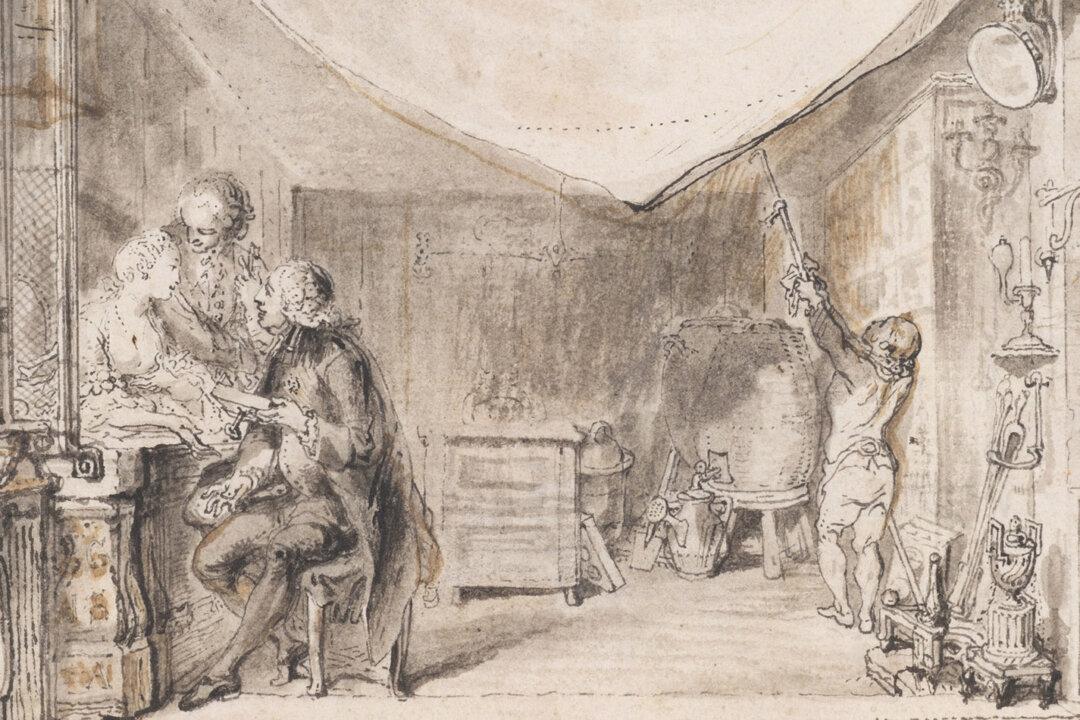Paris was the “it” destination this summer as the host city of the Olympics. Wall-to-wall media coverage extolled the capital’s cultural treasures and chic scenes of everyday life. The Metropolitan Museum of Art has on view, through Feb. 4, 2025, a special exhibition that is a passport to Paris, albeit an 18th-century version.
“Paris Through the Eyes of Saint-Aubin” is a travelog of the city during the age of Enlightenment, a time of social, political, scientific, educational, and artistic evolution. The viewer’s guide is the work of Gabriel de Saint-Aubin (1724–80), a prolific draftsman and keen observer of city life. This exhibition commemorates the 300th anniversary of his birth, featuring examples of his oeuvre in the museum’s permanent holdings, private collections, and supplementary works by contemporary artists, including family.





